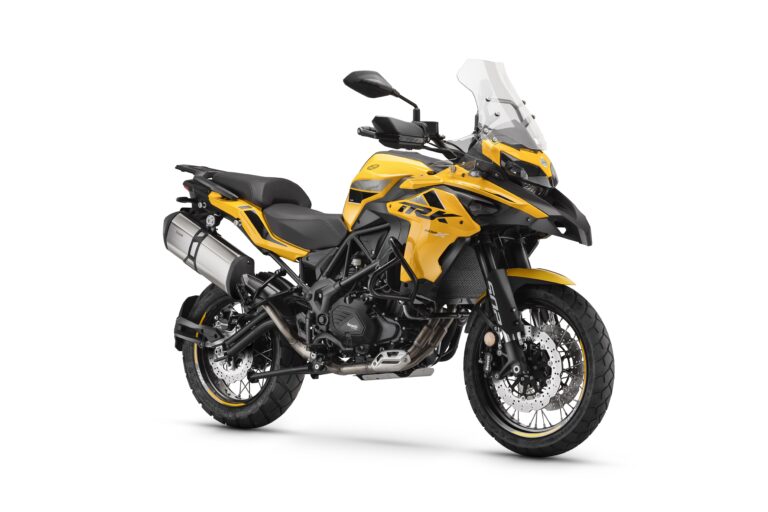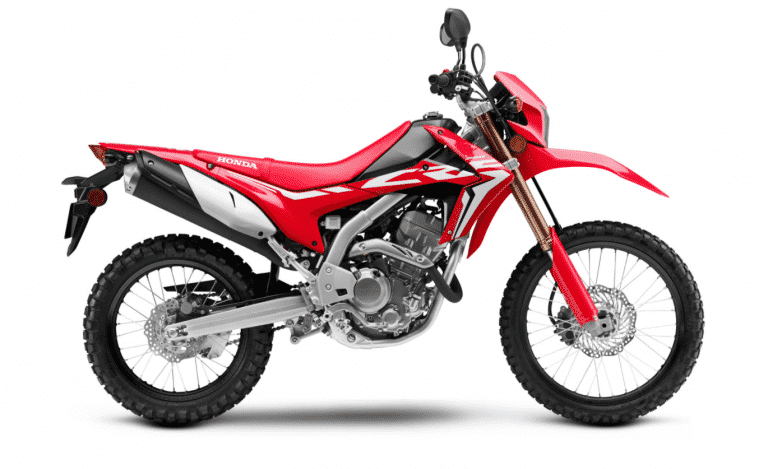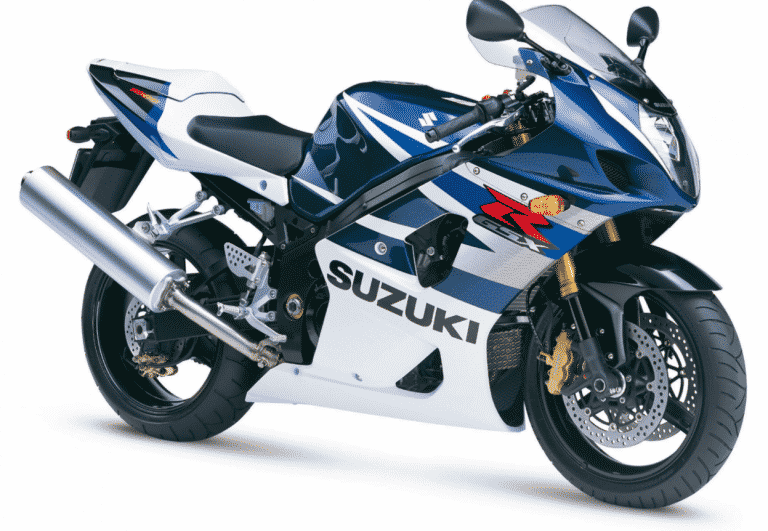Kawasaki Vulcan 750 (1985-2006) Maintenance Schedule and Service Intervals
This is the maintenance schedule with associated service intervals for the Kawasaki Vulcan 750.
The Kawasaki Vulcan 750 is a small-bore cruiser that Kawasaki first introduce in 1985 and made largely unchanged for over two decades.
The core of the Vulcan 750 is a 749cc liquid-cooled carburettor-fed DOHC 8-valve V-twin — a quite advanced engine for a cruiser. It makes modest peak power of 49 kW (66 hp), with a very flat torque of 62 Nm (47 ft-lbs) through its modest torque range.
The engine runs a mild compression ratio of 10.3:1 and is very reliable.
Final drive is a 5-speed transmission and a shaft drive.
Over its long lifespan, the Vulcan 750 hardly changed. The maintenance schedule below came from one of the more recent manuals but applies to all models, with only minor changes in the past but nothing significant.
From 2006 the Vulcan 750 was replaced by the Vulcan 800.

This site has links for things like oil and spark plugs from which we earn a commission (which unfortunately nobody can save, not even us). If you appreciate this work, then please use those links. Thanks!
What you need to service your Kawasaki Vulcan 750
If you’re doing a basic service on your Kawasaki Vulcan 750, you’ll need the following consumables.
| Part | Vulcan 750 spec |
|---|---|
| Engine oil | Kawasaki 10W-40 engine oil, or another that’s JASO MA spec, e.g. Motul 5100 10W-40 |
| Oil filter | Use a Hiflofiltro HF204RC oil filter, which fits on many motorcycles. |
| Spark plugs | Use NGK DP7EA-9 spark plugs |
| Air filter | Use a K&N KA-7586 air filter. |
| Brake fluid | The manual specifies DOT 4. Castrol DOT 4 is a well-known and affordable one. |
| Shaft drive oil | Spec for the Vulcan 750 is API GL-5 Hypoid gear oil, SAE 90. |
| Coolant | Use an ethylene glycol-based coolant. |
Maintenance Schedule for Kawasaki Vulcan 750
Below is the maintenance schedule for the Kawasaki Vulcan 750.
The following is the list of maintenance operations and to be done on this motorcycle with a time or distance interval — whichever comes earlier.
For all items marked “check”, adjust, clean, or replace them as necessary.
| mi x 1000 | 3 | 6 | 9 | 12 | 15 | 18 | |
|---|---|---|---|---|---|---|---|
| km x 1000 | 5 | 10 | 15 | 20 | 25 | 30 | Every |
| Engine oil — change (Kawasaki 10W-40) | ✓ | ✓ | ✓ | year | |||
| Oil filter — replace (HF204RC) | ✓ | ✓ | ✓ | ||||
| Oil screen — clean | ✓ | ✓ | ✓ | ||||
| Spark plugs — clean and gap. Replace as necessary (NGK DP7EA-9) | ✓ | ✓ | ✓ | ✓ | ✓ | ✓ | |
| Carburetor synchronization — check | ✓ | ✓ | ✓ | ✓ | ✓ | ✓ | |
| Idle speed — check/adjust | ✓ | ✓ | ✓ | ✓ | ✓ | ✓ | |
| Throttle grip play — check | ✓ | ✓ | ✓ | ||||
| Air suction valve — check | ✓ | ✓ | ✓ | ✓ | ✓ | ✓ | |
| Air cleaner element — clean | ✓ | ✓ | ✓ | ||||
| Air cleaner element — replace (KA-7586) | ✓ | 5 cleanings | |||||
| Fuel system — check | ✓ | ✓ | ✓ | ||||
| Evaporative emission control system (if fitted)—check | ✓ | ✓ | ✓ | ✓ | ✓ | ✓ | |
| Battery electrolyte level — check | ✓ | ✓ | ✓ | ✓ | ✓ | ✓ | month |
| Brake play — check | ✓ | ✓ | ✓ | ✓ | ✓ | ✓ | |
| Brake light switch — check | ✓ | ✓ | ✓ | ✓ | ✓ | ✓ | |
| Brake lining or pad wear — check | ✓ | ✓ | ✓ | ✓ | ✓ | ✓ | |
| Brake fluid level — check | ✓ | ✓ | ✓ | ✓ | ✓ | ✓ | month |
| Brake fluid — change (Castrol DOT 4) | ✓ | 2 years | |||||
| Clutch — adjust | ✓ | ✓ | ✓ | ✓ | ✓ | ✓ | |
| Steering — check | ✓ | ✓ | ✓ | ✓ | ✓ | ✓ | |
| Final gear case oil level — check | ✓ | ✓ | ✓ | ||||
| Final gear case oil — change (API GL-5 Hypoid gear oil) | ✓ | ||||||
| Propeller shaft joint — lubricate | ✓ | ✓ | |||||
| Nuts, bolts, and fasteners tightness — check | ✓ | ✓ | ✓ | ||||
| Tire wear — check | ✓ | ✓ | ✓ | ✓ | ✓ | ✓ | |
| General Lubrication — perform (Lithium soap-based grease) | ✓ | ✓ | ✓ | ✓ | ✓ | ✓ | |
| Front fork oil — change | ✓ | ||||||
| Swingarm pivot — lubricate | ✓ | ✓ | |||||
| Brake camshaft — lubricate | ✓ | 2 years | |||||
| Coolant — change (ethylene glycol-based coolant) | ✓ | 2 years | |||||
| Radiator hoses, connections — check | ✓ | ✓ | ✓ | year | |||
| Steering stem bearing — lubricate | ✓ | 2 years | |||||
| Brake master cylinder cup and dust seal — replace | 2 years | ||||||
| Brake caliper piston seal and dust seal — replace | 2 years | ||||||
| Brake cable — replace | 2 years | ||||||
| Brake hose — replace | 4 years | ||||||
| Brake hoses and connections — check | ✓ | ✓ | ✓ | ✓ | ✓ | ✓ | |
| Fuel hoses and connections — check | ✓ | ✓ | ✓ | ✓ | ✓ | ✓ | |
| Fuel hose — replace | 4 years |
Tire size and tire pressure for the Kawasaki Vulcan 750
The Kawasaki Vulcan 750 has the following tire sizes and pressures standard. Note the unconventional setup of a 19-inch front and 15-inch rear tyre.
| Wheel | Tyre (Tire) size | Tyre (Tire) pressure (cold) |
|---|---|---|
| Front | 100/90-19 M/C 57S | 200 kPa/28 psi |
| Rear | 140/90-15 M/C 70S | 225 kPa/32 psi |
Stock, the Vulcan 750 shipped with cruiser-spec tires, like the Bridgestone Exedra or Dunlop D404 series. These days fit whatever mid-range cruiser-spec tires you can find.
About the Kawasaki Vulcan 750

The Kawasaki Vulcan 750 is an iconic classic cruiser, and the first of the iconic Vulcan line that has spawned machines all the way from tiny bikes to the massive Kawasaki Vulcan 2000.
Kawasaki first launched the Vulcan 750 in 1985. It was the first cruiser Kawasaki launched with a V-twin engine.
Given the classic cruisers that Kawasaki has made since, including the iconic Nomad series, the Vulcan 750 was quite a humble start. But it had many elements that made it to later motorcycles.
The Kawasaki Vulcan 750’s was thoroughly modern — especially for the time. The engine is a liquid-cooled 749cc V-twin, already unconventional in cruisers for being small in capacity and having liquid cooling.
But it goes further. It also has dual overhead cams and four valves per cylinder (making it an 8-valve engine). Despite this, the Vulcan 750 has hydraulic valve lash adjusters, which means you never have to adjust the valves — you’ll notice it’s not a line item in the Vulcan 750’s maintenance schedule.
The engine is rubber mounted within the steel frame, meaning the Vulcan 750 has quite a smooth and vibration-free ride.
Finally, the final drive in the Vulcan 750 is a shaft drive. You just have to keep the lubricant topped up and replace it every now and then and you basically have a very, very low-maintenance cruiser.
Like most cruisers, the ride gear on the Kawasaki Vulcan 750 is simple, but not excessively so. There’s non-adjustable front suspension, though at the rear you can adjust the rear shocks for not just preload but also rebound damping.
At the front, there’s not just one (like on most cruisers) but two disc brakes. Maybe Kawasaki thought people would ride the Vulcan 750 hard!
After 2006, Kawasaki replaced the Vulcan 750 with the Kawasaki Vulcan 800.
Manual for the Kawasaki Vulcan 750
The above maintenance schedule comes directly from the user’s manual for the Kawasaki Vulcan 750. You can get manuals for the recent versions of the Vulcan 750 from Kawasaki’s website here.








